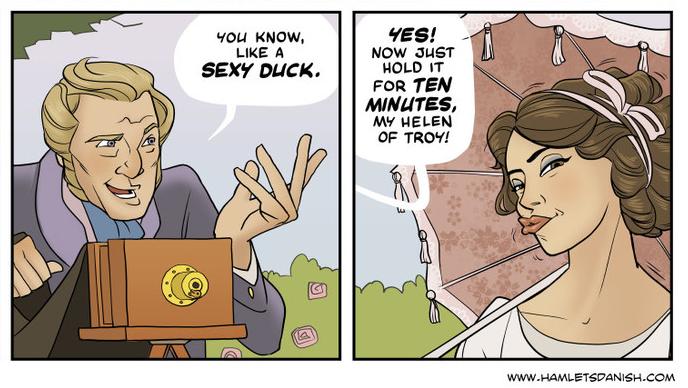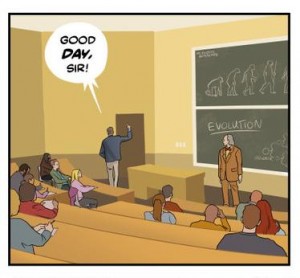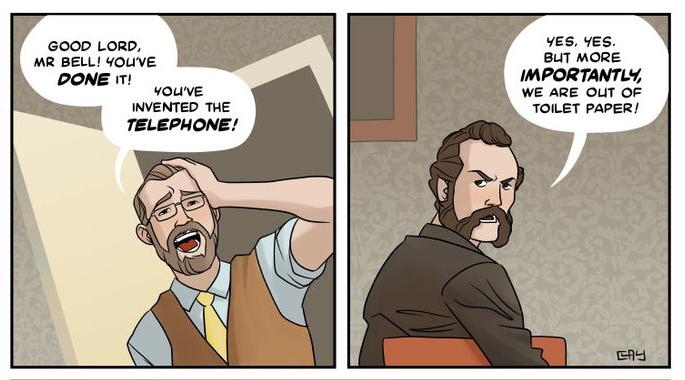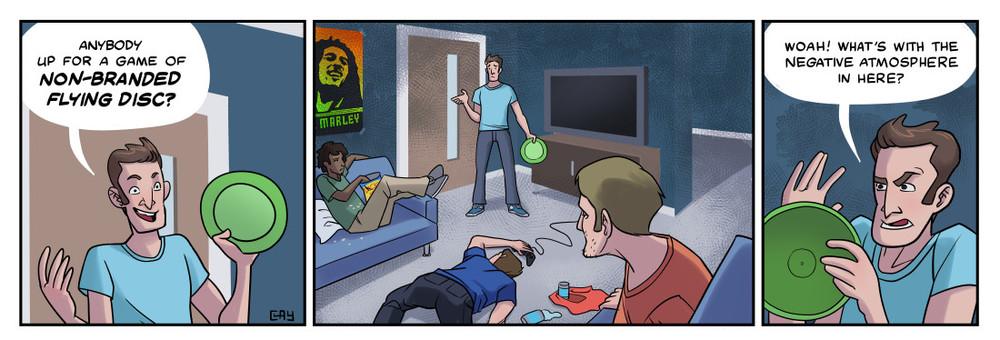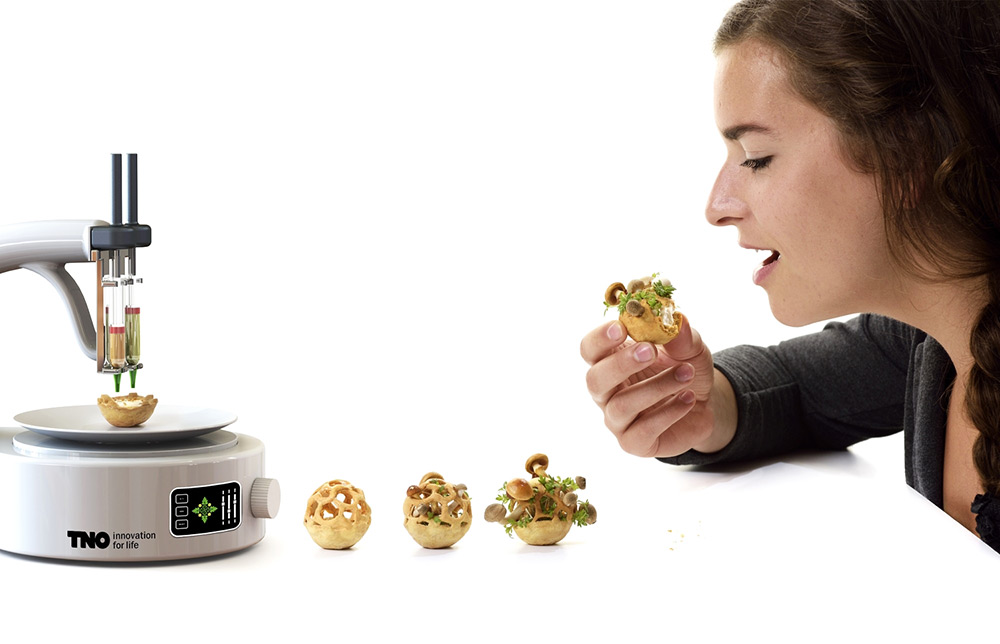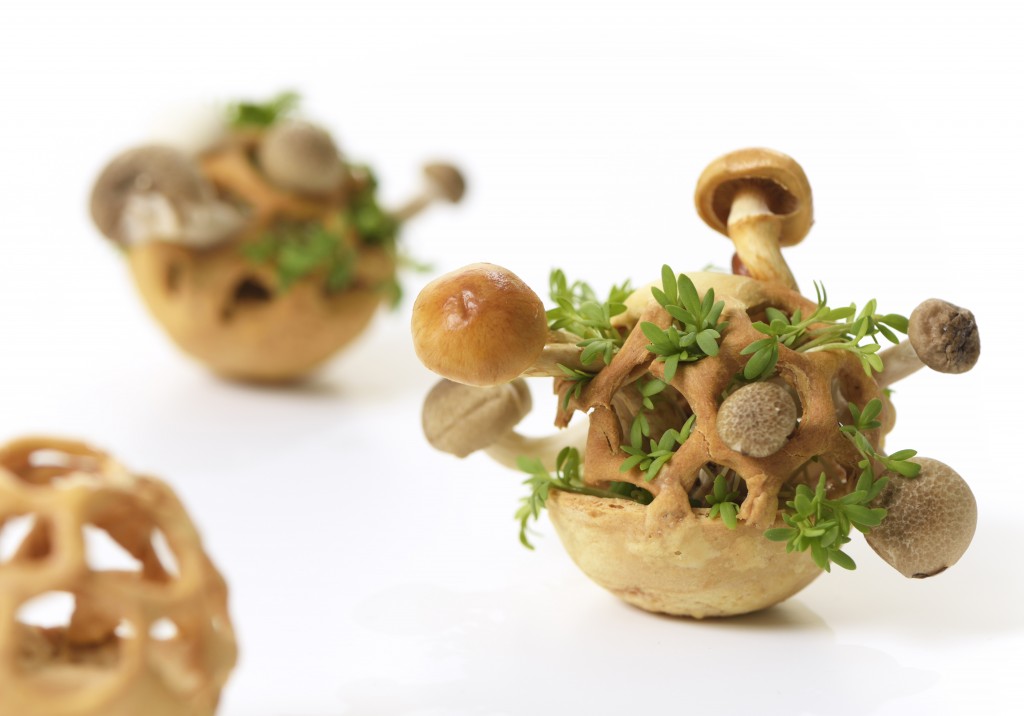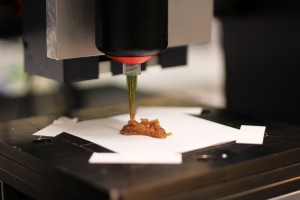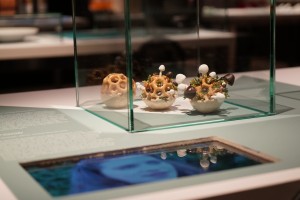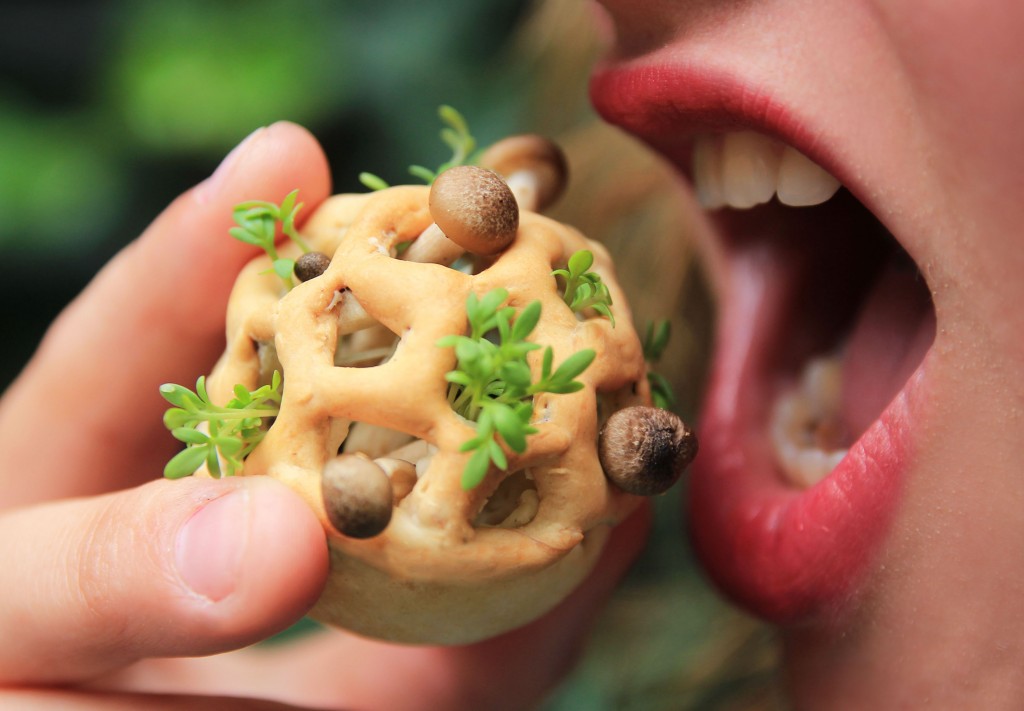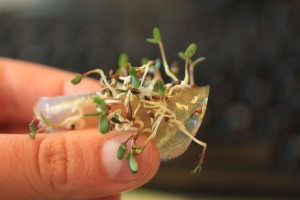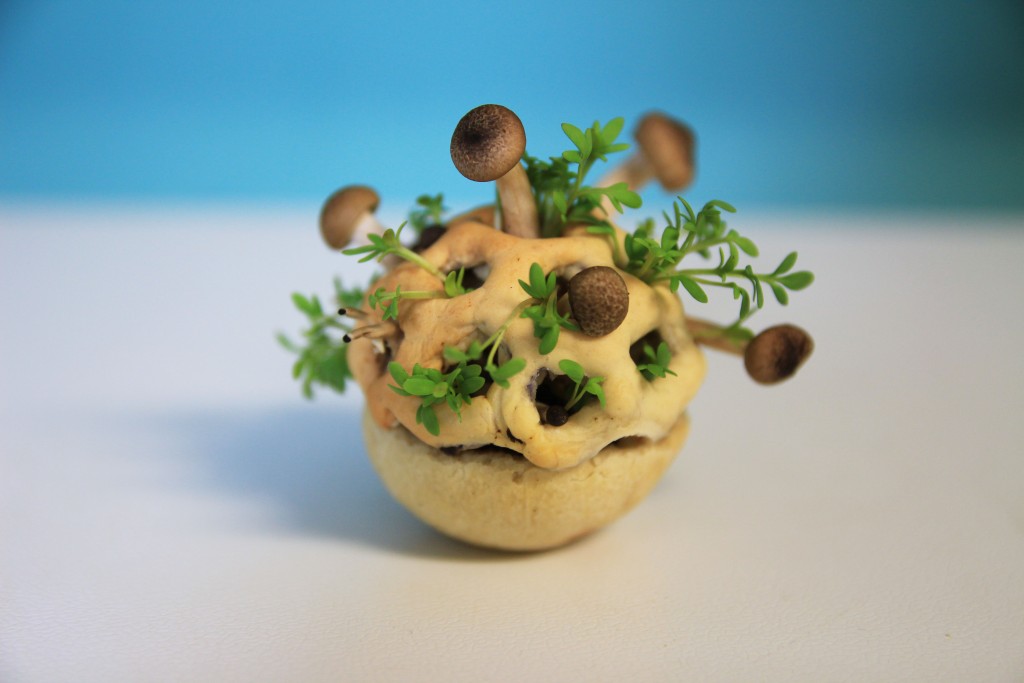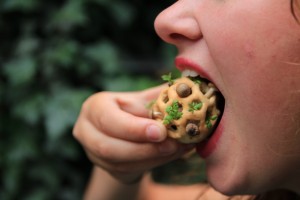Where do you live? Where are you from?
I’m a Virginian, born and raised. Born in Appalachia, and raised in a small town in Northern Virginia called Warrenton. I went to college at the University of Virginia, and I’m currently living in Fairfax County, Virginia.
What is your educational background?
My educational background is a hodgepodge of arts and sciences with a focus on languages. In high school I took lots of French and Latin, and in college, I took a bunch of Japanese language courses. Later I got into web development, which turned out to be a lot like learning a language, and made that my career.
When did Hamlet’s Danish start?
Hamlet’s Danish started in April of 2014.
Any other art or comics people can find from you online?
In college, I drew a couple strips for the school newspaper, and from 2004-2012 I did a comic called Rob and Elliot with my brother, Hampton Yount, as the writer. He’s a stand up comedian/writer and ridiculously funny. I have the archives for that comic up on my site.
Your characters make really appropriate facial expressions. How hard is that to do?
Well, it’s much easier now than when I started. I used to draw boring same-y faces a lot. I had a handful of expressions that I would overuse and it was something about my art that bugged me, so I made a conscious effort to practice it. I still have to check myself to make sure I’m not relying on repetitive easy expressions. Drawing a comic is kind of like planning and acting out a scene. I tend to make the face I’m drawing as I’m drawing it, which must look pretty ridiculous.
What inspires the way your characters look?
The characters change from week to week, so there’s not really a unifying look. I’ll also change up my style between cartoony and realistic based on the script, or just how I’m feeling that week. I’ll spend lots of time researching images for inspiration on posture or clothing, especially on the historical comics.
I also really like your dialogue and wide range of subjects that always have a nod to history, gaming and science.
You don’t seem to mind taking a shot at conventional wisdom. Do you have any political or social agenda behind the project?
My only agenda is to make the funniest comics I can. My views on science, culture, history, and politics will seep into that, for sure, but I’m not trying to use my comics as a platform for anything other than comedy. In general, I’m a big history buff and a huge fan of science, so those topics tend to crop up a lot. The only thing I try and stay away from is pop culture or meme jokes. They date quickly and I don’t make comics fast enough for it.
How long does it take you to get a one page comic like that done?
Anywhere from 6-10 hours. Sometimes more. It’s about 30% writing and lettering, 40% pencilling, 10% inking and 20% coloring.
What medium are you using? Is it all created digitally?
It’s all digital. I use Manga Studio 5 for the whole thing. I’m really into tech and made the switch to tablet drawing in 2002. I haven’t looked back since. I currently use a Cintiq, which is a great piece of hardware.
How much money does this project make you? Do you have a day job?
It doesn’t make a lot, but that’s on me. I have a great day job as a web designer/developer, so I haven’t really felt the need to work to monetize the comic. I don’t have a store because I dread order fulfillment, and I removed all ads from my site because they weren’t earning much, and I didn’t like how they looked. Monetizing is something I know I need to work on, but I’m making baby steps right now. I plan to have a store later this year, and I’m attending a few conventions where I’ll have books printed. Right now, my main focus is expanding my audience.
What has the response been like? How much feedback do you get and what’s it like?
My audience is still relatively small, so I only get a modest amount of feedback, but when I do, it’s been overwhelmingly positive. Every once in a while, I’ll make it to the front page of Reddit or Imgur or something and that definitely gives you a nice ego boost :).
Do you have any upcoming work?
Right now, I’m just plugging away at Hamlet’s Danish and trying to maintain a work/life balance with a new baby. Occasionally I’ll work on a side project, like a piece of art or a short story comic, and I’ll post it on my site’s blog. My most recent side project was making a free Squarespace template for webcomic artists. The only upcoming thing right now is getting ready for a convention and printing some books for it.
Check out more of Hamlet’s Danish by Clay Yount at: http://clayyount.com/hamlets-danish/
|
Jonathan Howard
Jonathan is a freelance writer living in Brooklyn, NY |

